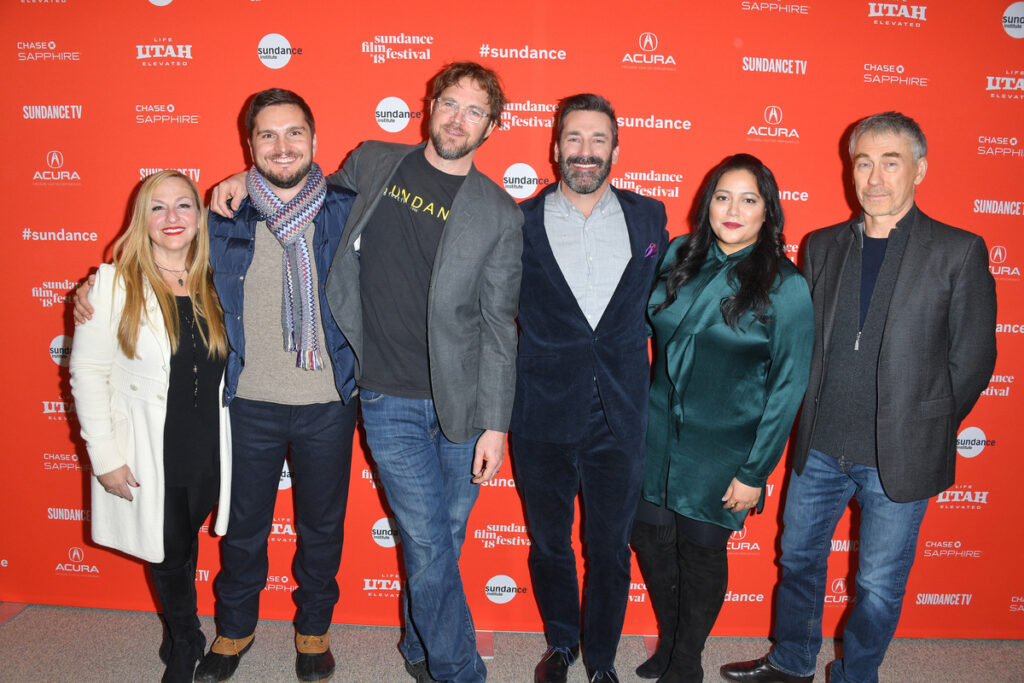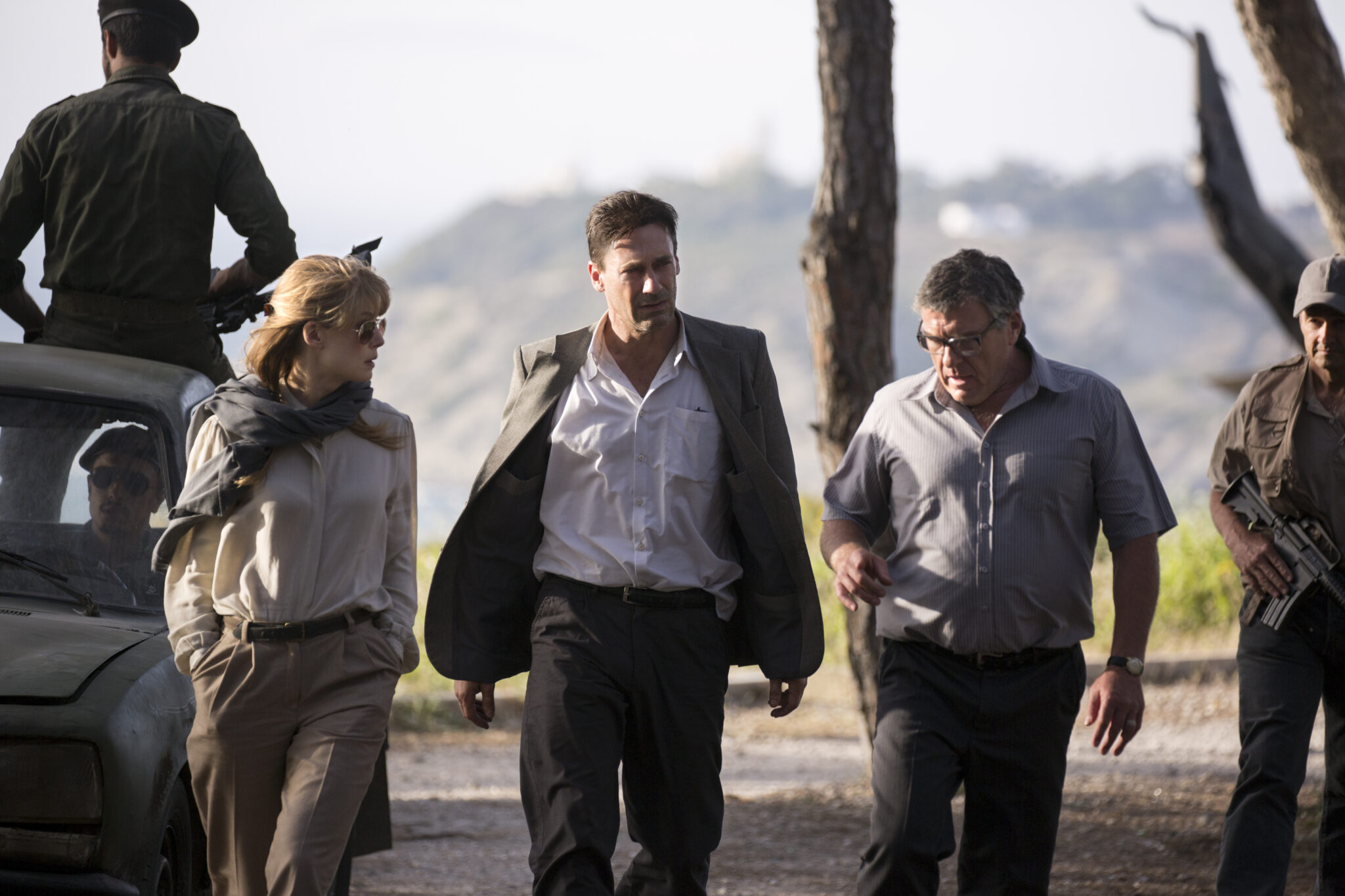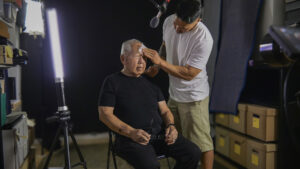By Shahnaz Mahmud
A screenwriter on the rise. A long forgotten script. A producer who unearthed it and held onto the dream of making it for years. A racing production during Ramadan. The story of how Beirut finally made it to the big screen has just as many twists and turns as its espionage plot.
The 2018 Tony Gilroy–penned political thriller centers on Mason Skiles played by Jon Hamm, a U.S. diplomat who left Lebanon in the 1970s after tragedy struck. Ten years later, the CIA sends Skiles back to a war-torn Beirut, and the mission’s success depends solely on him. Hamm is forceful as a broken man doing his best just to get through the day.
Beirut earns its place among good spy thrillers by immediately wrapping you up into the chaos of the spy world. There’s something about it, a coolness reminiscent of some of the fantastic films of the 1960s. Bullitt or The Thomas Crown Affair anyone? Hamm steps up as a leading man and exudes charisma in Beirut, which is essential as the intricate plot tangles around to see his character actually influence the actions of both the terrorists and the government representatives involved. No matter how far it goes, you willingly go along with him as the plot thickens.
While it is a fictional story, Gilroy’s astute script was grounded in extensive research. Part of the inspiration came from the real-life kidnapping of CIA Station Chief William Buckley in 1984.
 Plot twists and turns aside, though, Beirut marks a rare moment in the film industry — when a screenplay finally gets its due nearly three decades later. Gilroy first wrote it back in 1991 when he was a young upstart, not the prolific writer-director he is now whose 30-plus-year career includes Michael Clayton, most of The Bourne franchise, Duplicity, The Devil’s Advocate, Proof of Life, Rogue One: A Star Wars Story, and now Andor.
Plot twists and turns aside, though, Beirut marks a rare moment in the film industry — when a screenplay finally gets its due nearly three decades later. Gilroy first wrote it back in 1991 when he was a young upstart, not the prolific writer-director he is now whose 30-plus-year career includes Michael Clayton, most of The Bourne franchise, Duplicity, The Devil’s Advocate, Proof of Life, Rogue One: A Star Wars Story, and now Andor.
When his original script for Beirut (then known as High Wire Act) made the studio rounds, it was red hot. Gilroy penned it for Interscope Films, a major studio for whom he wrote The Cutting Edge, a comedy-romance set in the world of ice skating. In fact, High Wire Act sprang from daily discussions Gilroy was having with producer Robert Cort on the set of The Cutting Edge. Cort had worked for the CIA, and both would talk about news of the day and politics, and books they were reading — mainly From Beirut to Jerusalem by Thomas L. Friedman — during those long production hours.
While many were interested in High Wire Act in the early ’90s, the geopolitics were considered too controversial, and in the end, the film was too expensive to make. So, the script sat in a drawer for nearly a decade. Gilroy credits the buzz around High Wire Act with helping to elevate his career but he moved on never looking back.
Enter Michael Weber — a producer who works for Radar Pictures, which is owned by American media mogul Ted Field. Field also owns Interscope Communications (Bill & Ted’s Excellent Adventure, The Texas Chainsaw Massacre). It is, of course, the same studio that Gilroy worked for in the early ‘90s, which still owned his script. Weber came across it in 2003 and couldn’t let go.
The turning point for Beirut’s greenlight was the success of Argo, a film that focuses on the rescue of six American diplomats during the 1979–1981 Iran Hostage Crisis in Tehran, Iran. It was nominated for seven Academy Awards in 2012, winning three: Best Picture, Best Adapted Screenplay and Best Film Editing.
With renewed interest in political thrillers set in the Middle East, Weber was determined to get High Wire Act made. In 2014 he sent it to Brad Anderson, the genre-hopping director who premiered several projects at the Sundance Film Festival(The Machinist, Happy Accidents, The Darien Gap to name a few).
The filmmaker didn’t hesitate, looking to immerse himself in a new world: “When I get into a project, part of it is the adventure of diving into something, learning about it and exploring, picking it apart, and for me, this was an opportunity to do that for a story and a world I wasn’t so familiar with. I try to do that with all the movies. It’s like you’re always opening new doors.”
The film was shot in Tangier, Morocco, on a 33-day shoot. The director’s desire to soak up the environment manifested in a profound way on set. The greatest challenge during filming, he said, was shooting during the holy month of Ramadan — one of his fondest memories.
“Our local Muslim crew couldn’t eat, drink, or smoke from sunrise to sunset,” he explained. “It was tricky to balance out, making sure they could get the work done but also not fall down and die. We needed to make sure they felt respected. It took a couple days to find the right balance. Every evening, at sunset, we’d put out a big feast for them. It became something to look forward to at the end of each day.”
Further, Anderson noted how “very present” the experience was. The scope of the story existed, he found, to allow for the team to play with perspective quite a bit, to bring a sense of hard realism to tough subject matter.

Beirut had its premiere at the 2018 Sundance Film Festival — 27 years after the script was written. The film is a lesson in happy miracles, patience, deftly handling complex subject matter, and of course, the love of craft. In the end, a good film is worth the wait.







